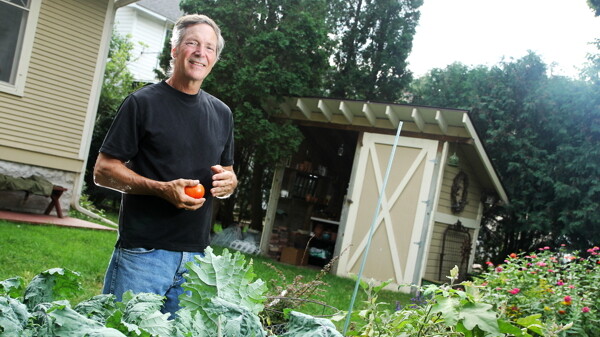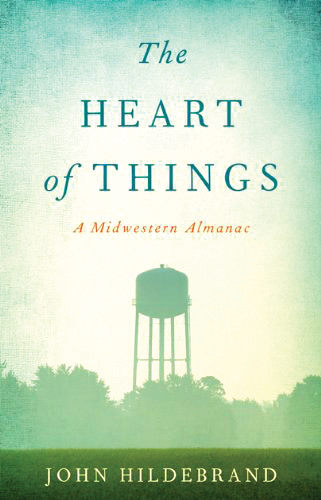Midwestern Heart
Hildebrand essays explore truth in everyday life
Ken Szymanski, photos by Andrea Paulseth |

When asked for an interview via email, John Hildebrand was reluctant. Not because he didn’t want to discuss his new collection of essays, The Heart of Things, but because of family matters. The article’s rapidly-approaching deadline coincided with the short period of time his son was home from Austria. They were heading out on a canoeing and camping trip up north.
Unlike a good, persistent journalist, I didn’t press it. At a local reading awhile back, Hildebrand spoke of putting together this collection. He talked about how these short essays on Midwest life were written, at least subconsciously, almost as letters to his children as they entered adulthood. As they left Eau Claire to attend college and explore the world, he wanted to showcase the value of this place in the Midwest. He hoped that they’d eventually want to return and make this their home.
“You don’t have to live an extraordinary life – you just have to make it interesting.” – John Hildebrand
So, in The Heart of Things, Hildebrand digs up insights from the simple moments: church suppers, hunting and fishing trips, parades, urban chickens, and family reunions. It’s not the stuff of a fascinating life; rather, these are fascinating takes on ordinary events. And Hildebrand – professor emeritus of English at UW-Eau Claire and author of three previous books – is a true craftsman with words. In a three-page essay, he can make readers see, think, feel, and learn about what was assumed to be, for Midwesterners, familiar territory. Essentially, he created this book with the guiding principle he told our university nonfiction writing class: “You don’t have to live an extraordinary life – you just have to make it interesting.”
The essays, 52 in all, are grouped topically in monthly sections, like an almanac. After turning to the September section, I picked one essay on which I had wanted to focus our interview. “Migrations,” which is about his youngest son leaving for college, starts like this: “For several years the first week in September meant a long car ride south down the interstate in a van loaded with bedding, a laptop, a new suitcase, and a child who wouldn’t be returning until Thanksgiving.”
Later in the essay, he flashes back to familiar vacation car trips with the kids: “There were visits to art museums and county fairs and powwows where the whole sky throbbed with drumbeats, excursions to dry-docked submarines and petting zoos and weird concrete sculptures made of seashells and tie-rods and old beer bottles. We considered all these trips educational in the sense that they were intended to provoke a sense of wonder as well as belonging, as if to assure the children, “What an interesting place you live in!”
Later in the essay, Hildebrand shifts back further in time and connects the thematic link. “I remember another, much shorter journey on my son’s first day of formal education. The three-block walk from home to preschool took forever that morning not because the boy was apprehensive, except about the looming prospect of naps, but because he was so absorbed by everything along the way. Every few steps he’d stoop to examine some new wonder – a fallen leaf, cracks in the sidewalk, a line of ants on the march – as if everything was worthy of attention. I’m afraid I played the role of Professor Marvel that day, dragging the little fellow by the arm, hurrying him along so we’d get there on time. ‘We’re here,’ I announced at the school door, then left him to face the alphabet and naptime alone.”
Then, at the end of the essay, Hildebrand circles back to the opening son-going-to-college scene, and, as he does with so many of these essays, arrives at a deeper truth within the simple moment: “Now our positions are reversed. Fixed on the future, that cloudland of possibility, he’s eager to get to the dorm on time, while I wish our ride could go on forever. When we get there, things will be rushed and awkward and I’ll forget what I want to tell him, which is this: Trust your instincts. What feels worthwhile and true now shouldn’t change overnight. And if home seems a little strange come Thanksgiving, it’s because you never had to think of home as an idea before – as a choice – and now you do. But that’s okay. Take your time. We’re not going anywhere.”
 And that – not some promotional interview – is what it looks like inside The Heart of Things.
And that – not some promotional interview – is what it looks like inside The Heart of Things.
Hildebrand will read from The Heart of Things at 7pm Tuesday, Oct. 14, at the Volume One Gallery, 205 N. Dewey St.






















